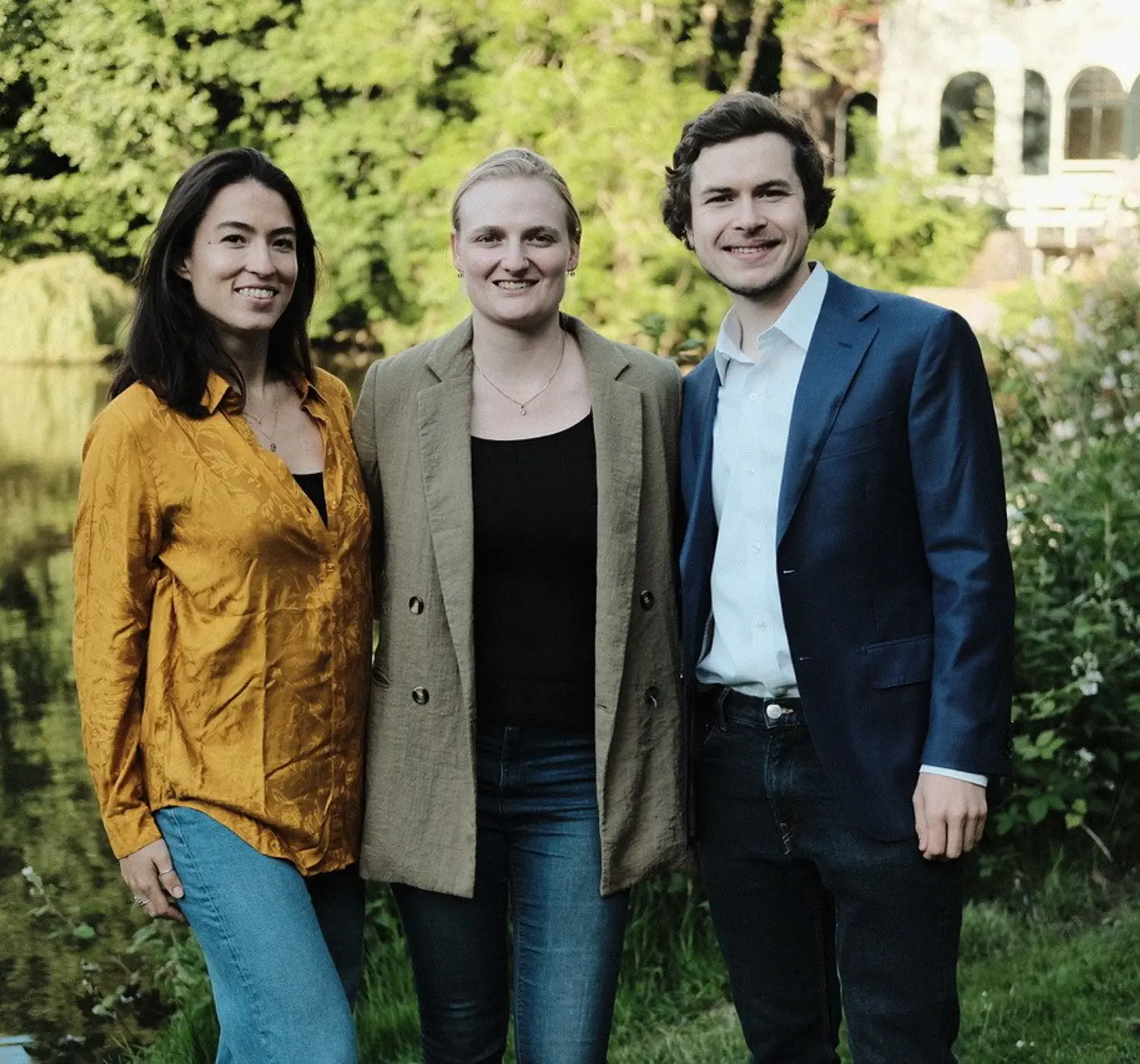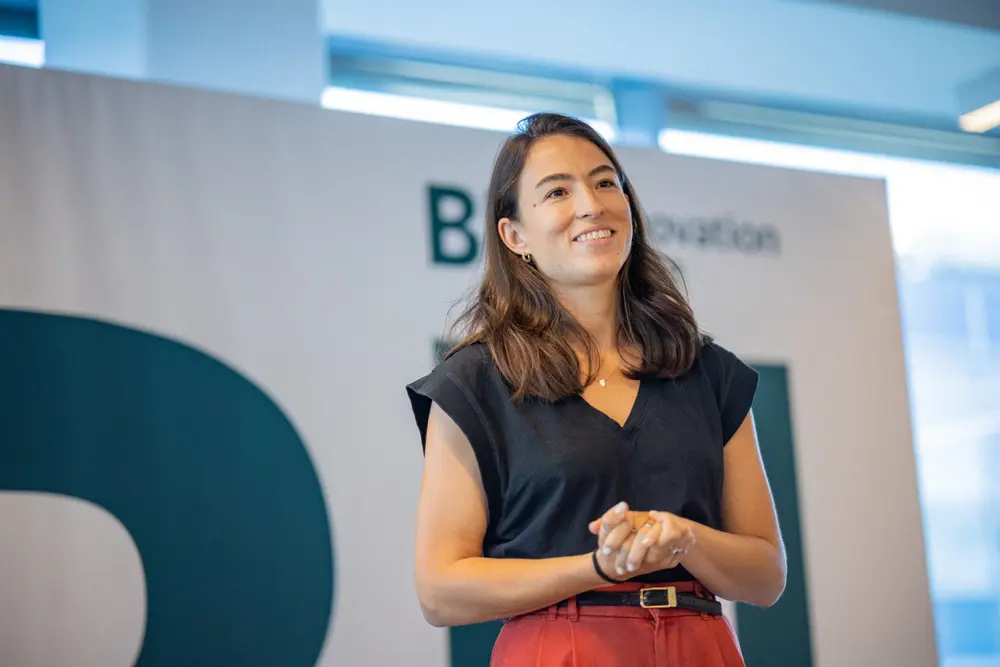
Upstream Foods is developing a novel ingredient to uplevel seafood alternatives. The Dutch start-up, that recently became a Planet B.io member, is using cell-culture methods, to make the tastiest fats that provide all the complex flavors, creamy mouthfeel, and health benefits that people love about traditional seafood.
We had a chat with Kianti Figler, CEO of Upstream Foods, to learn more about the company and in which ways she expects to benefit from the Planet B.io membership.

Can you tell us a bit about Upstream Foods and what you do?
Upstream Foods is a cultivated seafood startup, founded in 2022. We are developing cultivated salmon fat cells specifically. The fat is produced by growing salmon fat cells in a nutrient solution. These cells are identical to those in a living salmon, but they do not require the fish to be killed. The fat is where the taste, creamy mouthfeel, and health benefits come from in seafood. We believe that the future will be cultivated, which means that everybody all around the world will have access to cultivated seafood in restaurants and supermarkets. By focussing on fat, we aim to create a stepping stone towards this cultivated future.
What is the key driver for Upstream Foods?
There are two drivers. Our main driver is sustainability. We want to make an impact in this world. We feel that climate change is one of our most pressing issues right now, and making sure we have a resilient, future-proof, sustainable food system is high on the priority list. The second driver for me, and I think for the entire team, is curiosity. We are fascinated by this technology, cells, and biology. We are excited to see how far we can push this and provide the environment for these fat cells to really thrive.
Can you tell us more about the process and your envisioned products?
Looking ahead into the future, the first step of the production process will consist of taking a biopsy from a fish, culturing the stem cells, and multiplying them as much as possible. The second step is to differentiate those cells into fat cells, which we then provide as an ingredient to plant-based seafood manufacturers. By adding a small amount of cultivated fat cells to plant-based seafood, we can give consumers a tasty and healthy alternative to eating seafood without compromising on sustainability. We are continuously talking to plant-based seafood manufacturers and brands, making sure we are developing something that actually fits their needs.
Research & Development
How far are you in your technology development?
Right now, we are very much focused on Research and Development. Bringing cultivated seafood to the market is a lengthy process. Currently, we are focusing on the cell line development of salmon adipocytes (fat cells). The next step will be scaling up the process and the technology, while at the same time preparing for entering the market, which means obtaining regulatory approval and securing production space. We are aiming to enter the market at the end of 2026.
What are your current challenges?
The biggest challenge that we are currently facing is making sure that our cell line fits all of the requirements to scale it to the industrial production level. This is the bottleneck the entire industry is facing.
Who are your main competitors and how do you differ from them?
There are a couple of companies focusing on cultivated seafood. There is one in Germany, a couple in the US, Singapore, and Israel as well. There is only one company that is taking a similar approach as us, in Singapore, that is also focusing on fat cells from fish for formulation into plant-based products.
And then of course our indirect competitors, the producers of ingredients that we would be substituting (plant-based oils and flavor ingredients).
I think the uniqueness of our approach, using cell-based fats as a stepping stone towards a cell-based future, will allow us to reach scale a lot faster. We are using a small number of cells that have a big impact on the quality of the product. The faster we can reach scale, the faster we can make a serious impact.
Planet B.io membership
In which ways do you expect to benefit from the Planet B.io membership?
Planet B.io has a lot of really interesting partners and start-ups. In general, your network is really valuable to us. The mentors, advisors, investors, all of them.
How important is it for you that there is a Cellular Agriculture consortium in NL?
Upstream Foods is glad to be part of the Cellular Agriculture consortium. It is great to see the Dutch government taking steps towards investing in this space and making the Netherlands more of a biotech and Cell Ag hub. I do think we have that potential, but we need to move and invest if we want to capitalize on that potential.
Next steps
Which key milestones have you achieved that have contributed to making Upstream Foods an investable case?
So far we have optimized our biopsy protocol and our 2D culturing protocol. We are still culturing in flasks, but we are now making the step toward 3D suspension culture. We have developed a differentiation strategy that is more efficient. This means the cells need to be in culture for less time, which leads to a cost reduction.
What are key milestones you need to reach for your next round?
We need to have a cell line and an economic model. The first is the focus of our R&D team. For the model, we are currently collaborating with the Danish Institute DTU Biosustain, since there are no techno-economic models out there on cultivated seafood, and especially not cultivated fat. This will give us a basis for what a cost-efficient scaled-up process looks like. It will tell us what the minimum requirements for our cell lines are, in order to scale. Those are really the two focus points for our next round.
What will Upstream Foods look like five years from now?
Hopefully on the market. Likely not the European market. Those timelines are slightly longer, unfortunately, with all of the regulatory hoops and jumps that you have to take. But potentially the US or Singaporean market will be realistic.
Want to learn more about Upstream Foods? Check out their website
